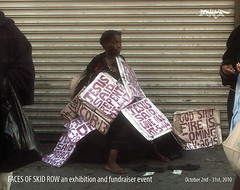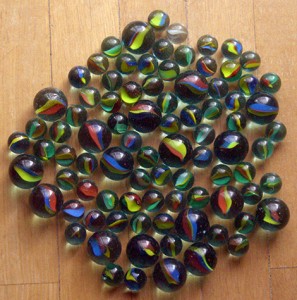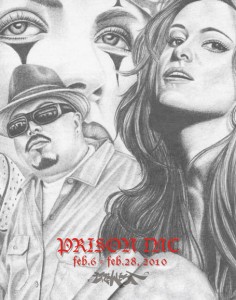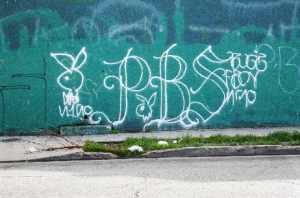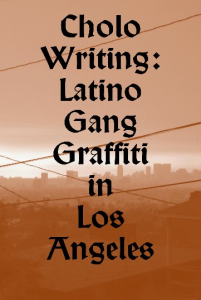On a recent trip to my hometown of San Diego I was introduced to the wonderful world of Tostilocos. Though it f-ed up my stomach I couldn’t not stop eating it. I think almost anything with Chaca-Chaca, lime and chile would be deloosh.
Author Archives: Ritzy Periwinkle
SLICK, PRIME, BRISK, GREEN, ENIK in Lincoln Heights
DISSIZIT: The Heights from Tim Jieh on Vimeo.
Siempre En Domingo
I was researching a new project tonight and out of no where I started singing the opening theme of Siempre en Domingo (R.I.P. Raul Velasco) I’m thinking the root is from my cousin e-mailing this past Saturday a photo I have never seen of him, his sister and I as kids standing in from of my abuelita’s house.
As a young sprite, on Sundays two things were a given, 1. I’d watch Siempre En Domingo 2. I’d get my domingo from my abuelita and/or my abuelito. My domingo (I guess you could say it was like my allowance from my grandparents) from my abuelita would come in either a handkerchief or paper towel that was bunched up at the top and closed with a rubber band. Domingo from my abuelito would just be handed to me. I liked my abuelita’s wrapping better. They hated each other but they loved me. (R.I.P. Sipriana Rivera Razo & Juan Rivera)
Do kids still get domingo?
“How Does Street Art Humanize Cities” Panel
A couple of weeks ago I attended the Zocalo Square panel discussion on street art called “How Does Street Art Humanize Cities†to support the the homie Man Uno at the Fowler Museum. Along side Man One, the panel included Patrick Polk (Fowler Museum curator), Aaron Rose (co-curator of MOCA’s forthcoming street art exhibit), Retna and was moderated by Jori Finkel (arts writer, LA Times). It was packed as I’m sure everyone anticipated it would turn into the “Blu Wall/Censorship†discussion. To see if it did or didn’t click HERE to watch the video.
TOP OF THE DOME 7
Top of the Dome is one of my favorite exhibits of the year. Customized skulls? Are you kidding me? I’m all over it! Â It opens this Sabado at Crewest in DTLA.
Saturday, November 6, 2010 from 6-9 p.m.
On view through November 28, 2010.
more info after the jump
“Power of Art” a fundraising event benefiting The Midnight Mission • Saturday OCT 23rd
This Saturday, Crewest will be hosting a fundraising event for The Midnight Mission
Date of Event:
Saturday, October 23, 2010
Time:
6 – 9 pm
Where:
Crewest Gallery
110 Winston St.
Los Angeles, CA 90013
(213) 627-8252
RSVP to skidrow@crewest.com
More info after the jump
Afrolatinos Documentary
My friend sent me this. Looking forward to seeing it.
MEXICO MEMORIES: CANICAS
Man Uno and I were at a corporate lunch last year and were asked to share with the table a childhood memory. A memory from Tijuana entered my mind immediately. Man Uno went first and his memory was about being in Tijuana too. I realized at that moment we all have Mexico memories to share.
Here’s one of mine:Â Canicas
I grew up in San Diego, South Bay to be exact, 2 exits away from the border. When I was about 4 years old my abuelita still owned apartments in Tijuana and we’d go down a few times a week. They were more like shacks that she rented with dusty wood floors, some with out houses and those with indoor toilets had to pour a bucket of water in them to make them flush.
PRISON INC Opening Saturday 2.06.10 at Crewest Gallery DTLA
(click to enlarge image)
I saw a preview of a few pieces this past Monday and there’s some amazing sh*t that is above and beyond the usual prison art. DON’T MISS OUT. If you don’t make the opening then for sure make it out to see this show before it bones out.
GO TO CREWEST.COM FOR MORE INFO
**** “Â Not recommended for a younger audience, but then again neither is prison.”- Man One aka Man Uno
LA CRISIS: WHAT’S GOING DOWN IN TEN?

Dear La Crisis,
You killed 2009 for everyone! I never wanted a year to end so badly as I did last year because of you. What do you have in store in 2010?
Sincerely,
Everyone
“Cholo Writing: Latino Gang Graffiti in Los Angeles”
“Cholo Writing: Latino Gang Graffiti in Los Angeles”
by Francois Chastanet with forward by Chaz Bojorquez.
This book gives Mexican-American ‘cholo’ writing its proper recognition and respect as “the oldest form of name graffiti of the 20th century.” Focusing on L.A. ‘cholo” writing styles from an aesthetic point of view, evident long before the explosion of tags and pieces of the early 1970’s.
Cholo writing is the oldest form of graffiti in the 20th century, evident in Los Angeles long before the appearance of tags and pieces in the early 1970s New York. It is a Mexican American phenomenom with a unique aesthetic based on blackletter typography, used for street bombing by the latino gangs. In the 1970s, Californian citizen Howard Gribble photographed examples of Latino gang graffiti over a wide geographic area in order to encompass a larger variety of styles, with the simultaneous idea of portraying Los Angeles. More than 30 years later, French typographer Francois Chastanet travelled to the same neighborhoods to photograph the inscriptions of today. (English text in this edition, also available in Swedish)
go to www.dokument.org for more info and to order
Mobile Food Truck: Nom Nom
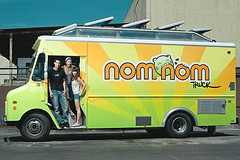
I’ve had amazing Banh Mi before in Chinatown. I guess now you can get one from a “mobile food truck”. The other day I came across a link to Nom Nom Truck. Has anyone tried it? What are your thoughts on this “mobile food truck” trend?




